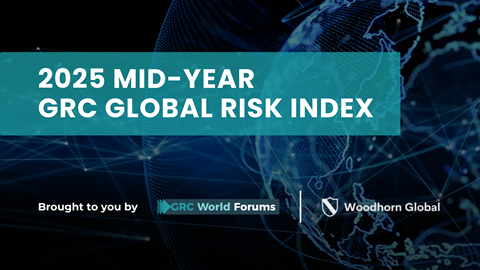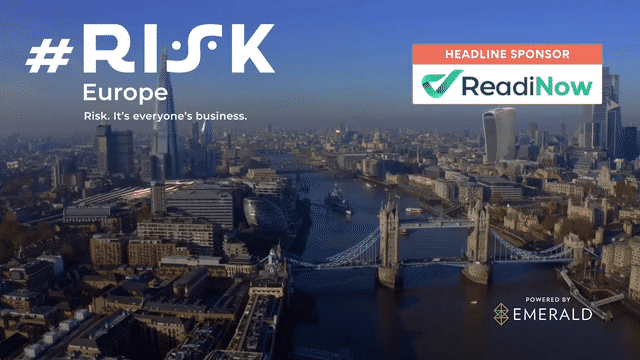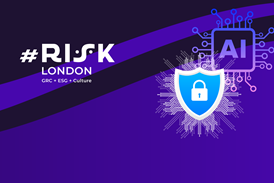With half of 2025 behind us, the imperative to diagnose and predict geopolitical risk is higher than ever. This exclusive index illuminates key global threats—and shares tangible steps to safeguard your firm’s operations and long-term value.

At the midpoint of 2025, the GRC Risk community is increasingly tasked with assessing, diagnosing, and in some cases predicting the impact of geopolitical risk on their firm’s operations and enterprise risk management programs.
This GRC Global Risk Index aims to map global risk at a macro level, illuminating the widening spectrum of the current geopolitical risk landscape.
It is important to note, however, that context is crucial when evaluating the risk profile of your firm and any potential impact from emerging threats.
Industry of focus, geographic location, and available resources can all significantly impact your geopolitical risk exposure and mitigation strategy. This is most evident when considering global conflict.
While startup firms operating in Silicon Valley may evaluate the longer-term impact of global conflicts on their strategic plans, peers located in Tel Aviv and Kyiv face immediate and ongoing threats to the safety of their teams and the future of their operations.
Key Global Risks
Tariffs & Trade Wars
The Trump Administration drastically changed the global outlook on international trade.
Your firm has undoubtedly examined the projected impact of the emerging trade wars on its bottom line. Heading into the second half of 2025, tariffs pose significant and direct risk impacts to firms operating across almost every industry.
Additionally, as supply chains shift in the coming months, risk and compliance teams will need to conduct more due diligence to ensure new partners meet current compliance guidelines and standards.
Political Uncertainty
After roughly half the planet headed to the polls in 2024, the political ecosystem looks much different and has created increased political uncertainty.
Global politics will continue to have near-term and direct impacts on firms as new governments implement their policy agendas and adapt to a shifting political world order.
Social Unrest
Political change is often marked by social unrest that can quickly impact consumer decision-making. An increasing number of companies have found that this can result in a rapid decrease in market share or firm valuation.
While the risks of social unrest are heightened in the short term, the impact on most companies is likely to be indirect, through macroeconomic shifts in consumer sentiment.
Cybersecurity Risks
Advances in technology and associated investment have increased firms’ ability to detect and mitigate cybersecurity threats.
Unfortunately, bad actors have also benefited from these same advancements, expanding their attack vectors and enhancing their ability to mask criminal behavior.
This will continue to be an area requiring vigilance to avoid direct impact over the longer term.
Global Conflict
When Russia invaded Ukraine, many Western companies were left scrambling to exit the Russian marketplace and protect their invested capital and assets in the region.
The impact of global conflict will be front and center on the world stage in 2025, and firms should develop contingency plans to implement in the event of expanding global conflict.
Sanctions
Governments continue to utilize sanctions as a form of economic warfare to weaken adversaries and reinforce policy positions. Companies that violate sanctions regulations face immediate and expensive consequences.
Global compliance teams tasked with ensuring adherence to economic sanctions regimes will need to continue monitoring for developments tied to increasing geopolitical tensions.
US/China AI & Tech Competition
The US and China are competing for dominance in the race for AI development to gain an economic and military strategic advantage.
In the US, this has led to instances of economic espionage, placing private companies at risk for IP theft.
Longer term, companies need to increasingly monitor
Geopolitical Risk Management - Best Practices
Successfully managing geopolitical risk is fundamental to staying ahead of emerging threats to your company’s long-term success.
There are tangible steps you can take to ensure that your company incorporates geopolitical risk management into your enterprise risk management program. Key first steps include:
- Performing a geopolitical risk assessment to establish the baseline risk profile of your company.
- Integrating geopolitical risk analysis into your existing risk management framework to ensure that the right intelligence flows to the right stakeholders.
- Establishing a global due diligence program that factors geopolitical risk analysis into strategic decision making.
- Developing contingency plans for your team to implement in the event of a crisis.
Firms that proactively manage geopolitical risk during this period of increased volatility will develop a stronger platform to protect long-term firm value and ensure resilience.
You can dowload the Global Risk Index as a pdf report on the button below.

2025 Mid-Year GRC Global Risk Index
DOWNLOADGRC World Forums:
The #RISK Series, powered by GRC World Forums & Emerald is a premier collection of global events dedicated to exploring the multifaceted world of risk. From cybersecurity and data privacy to financial crime, regulatory compliance, and geopolitical uncertainties, the #RISK Series provides a vital platform for professionals across industries to connect, learn, and build resilience in an increasingly complex and interconnected world.
Woodhorn Global Risk Advisory:
At Woodhorn Global, we empower organizations to navigate uncertainty with confidence. We offer customized risk management strategies for companies operating in complex, high-stakes environments. This includes managing geopolitical pressures and mitigating hidden risks through enhanced due diligence, enabling clients to make informed investment decisions with conviction.
Supporting documents
Click link to download and view these filesGlobal Risk Index
White Paper | PDF, Size 3.17 mb

















No comments yet